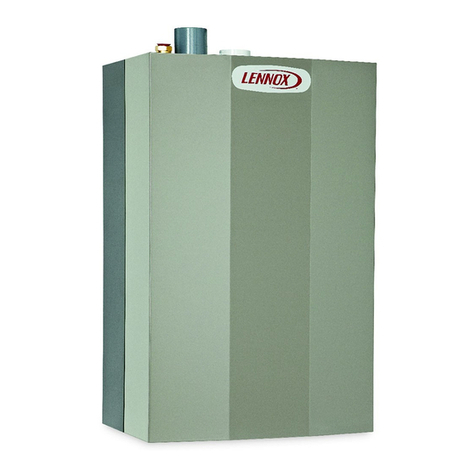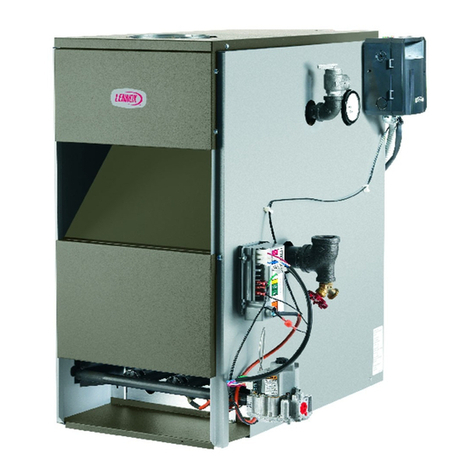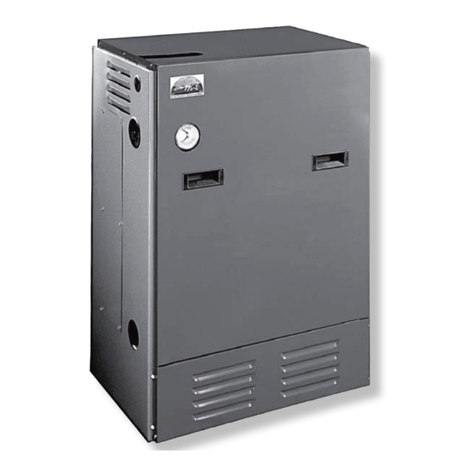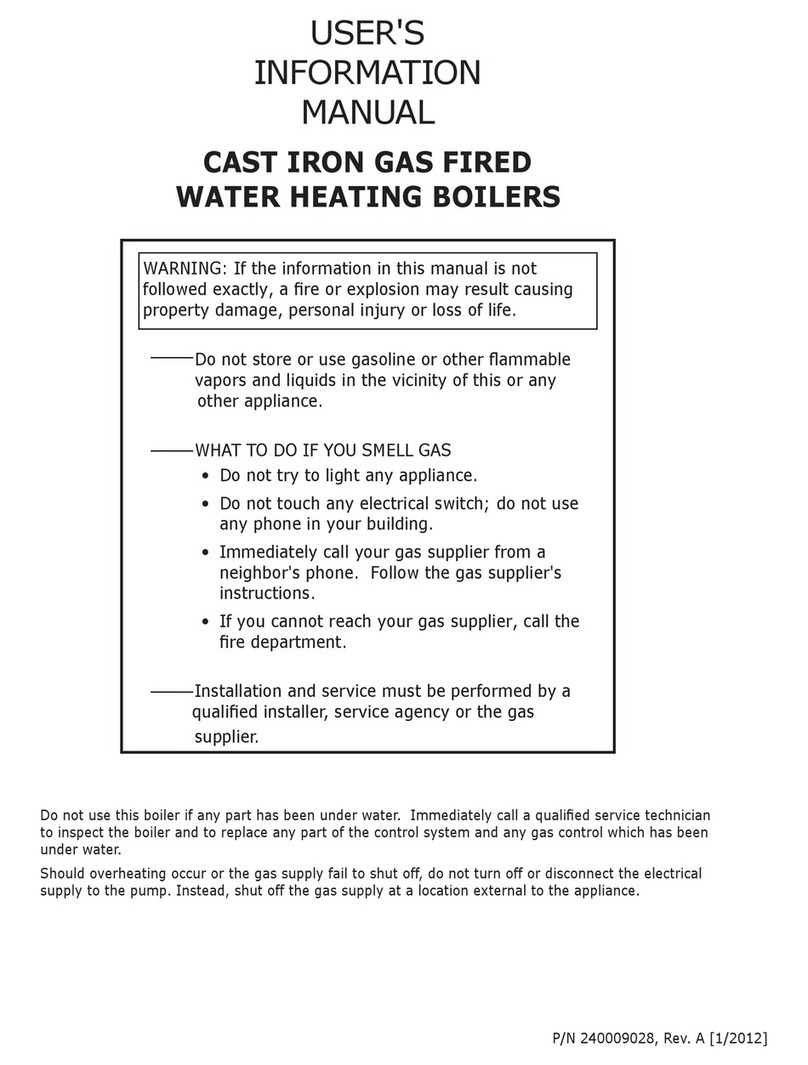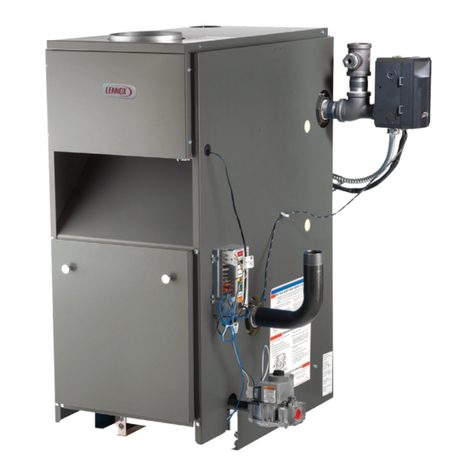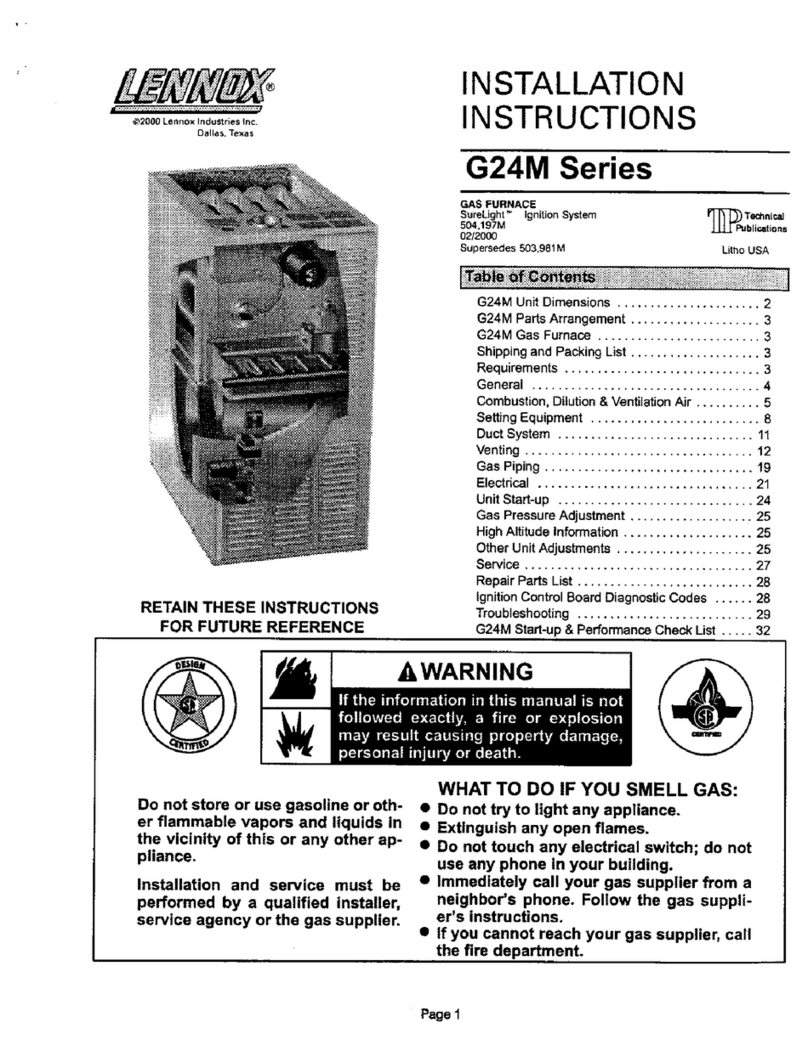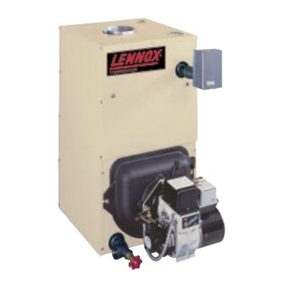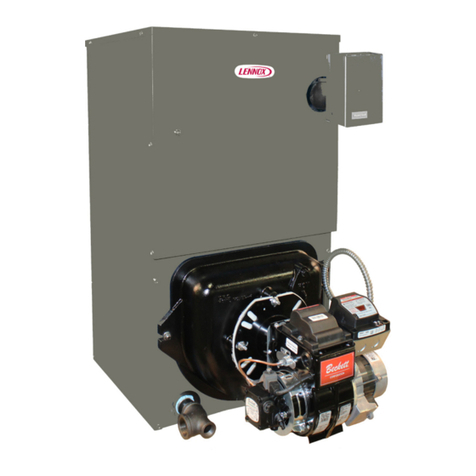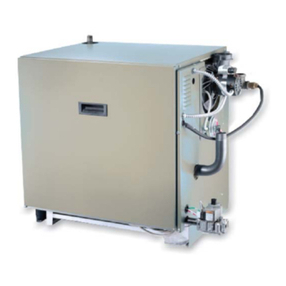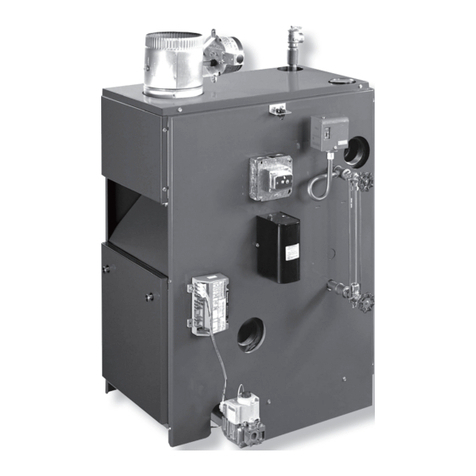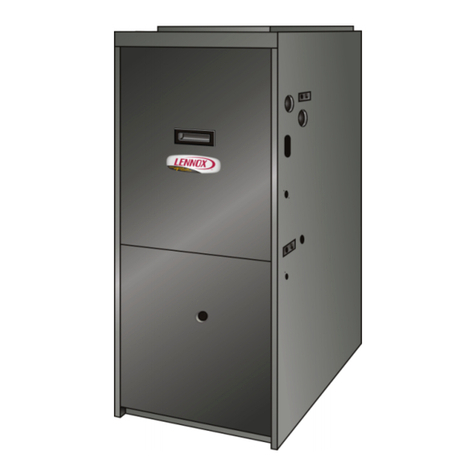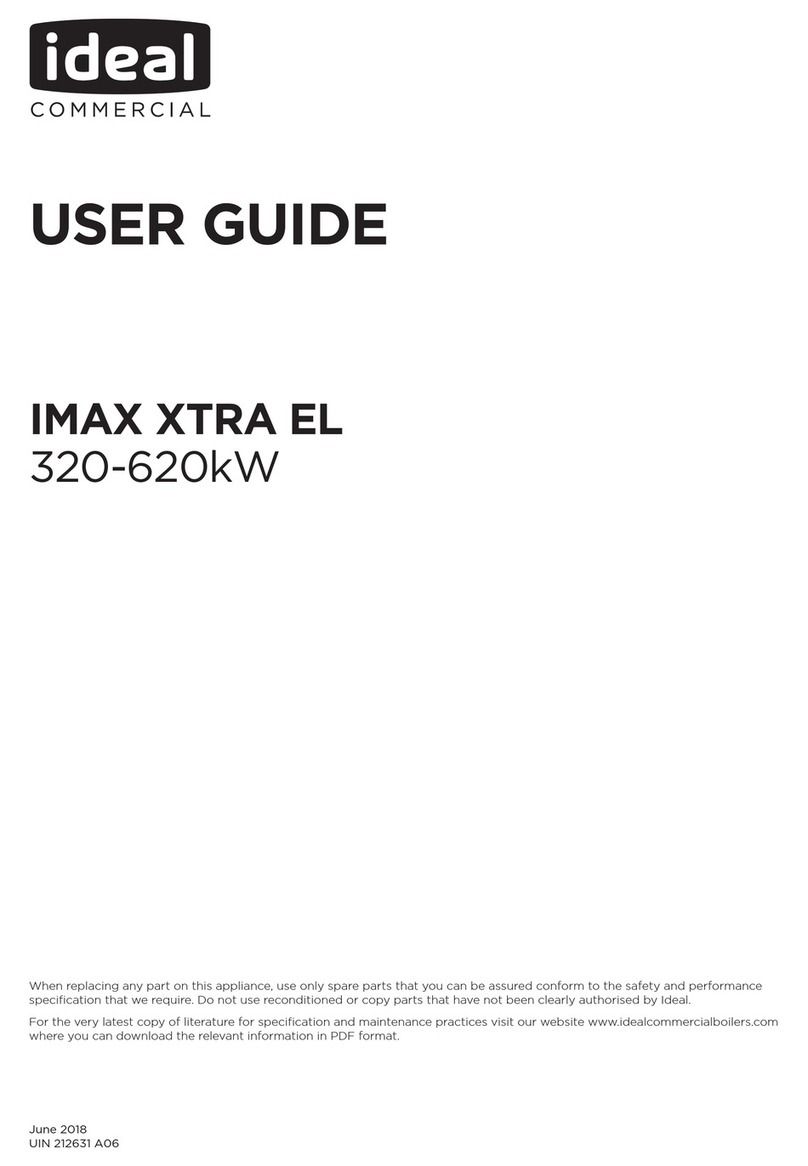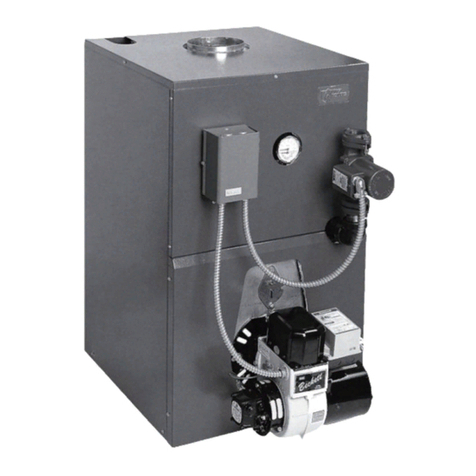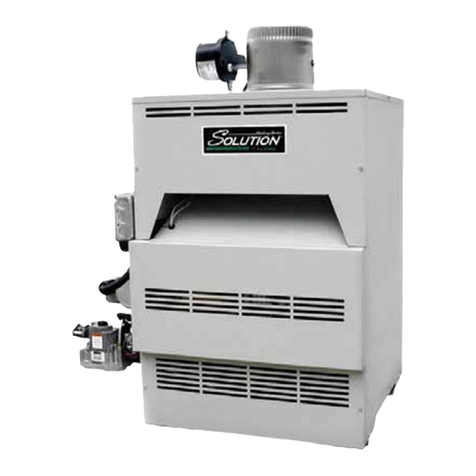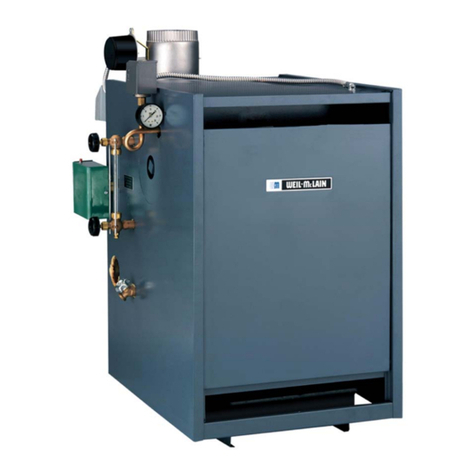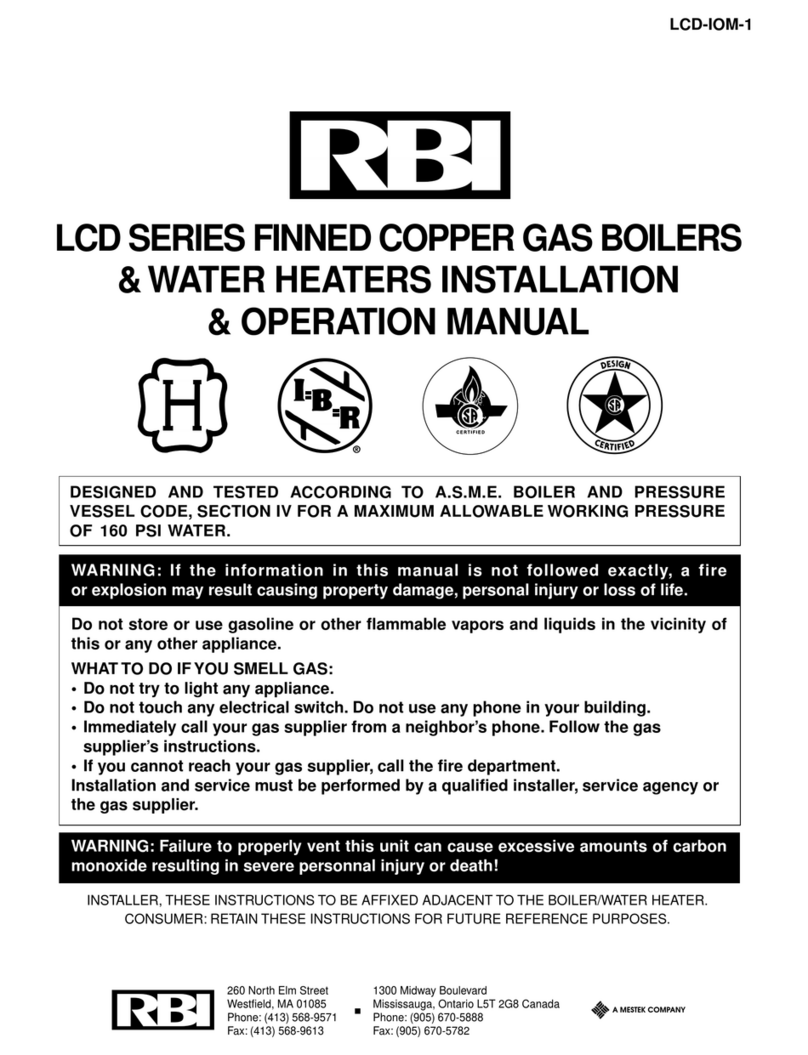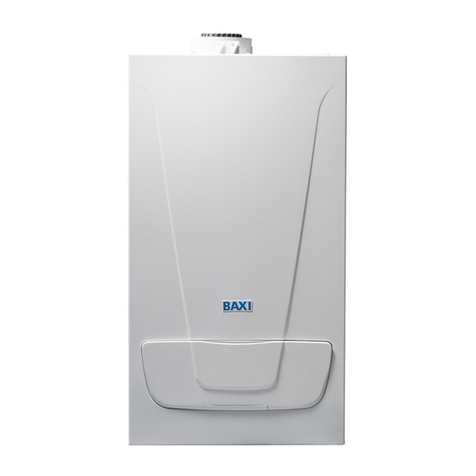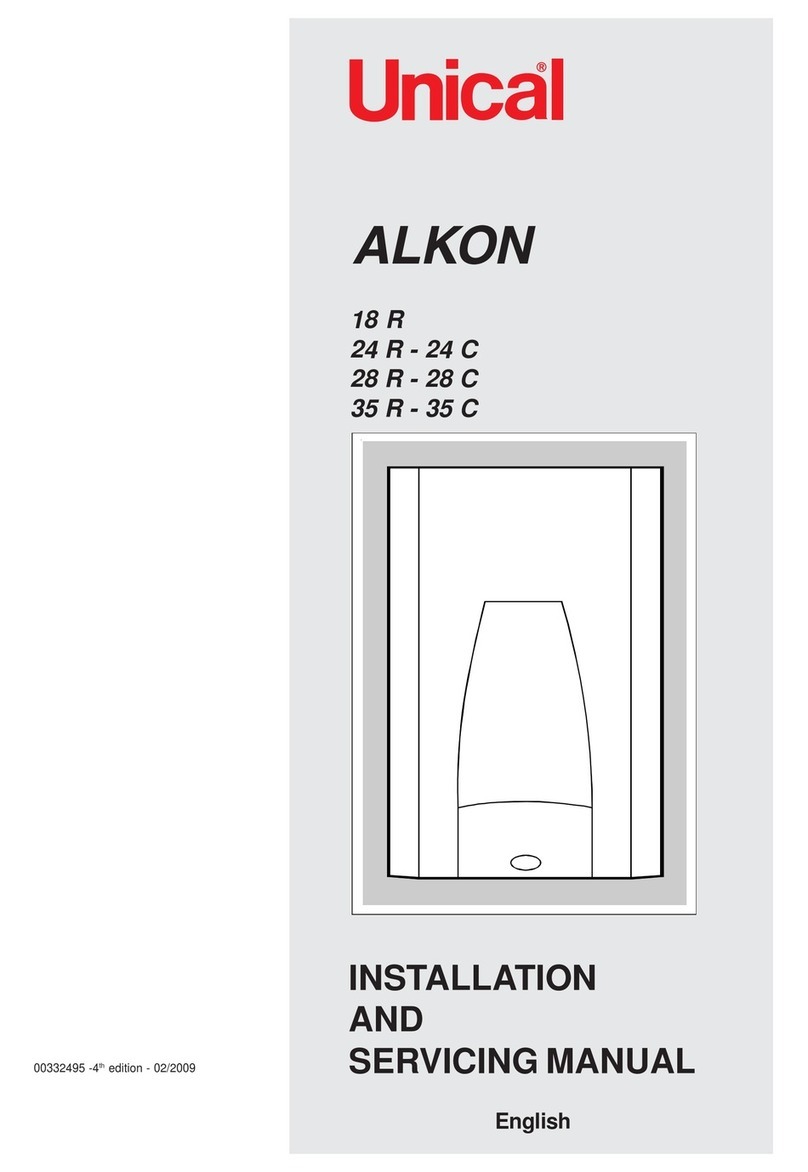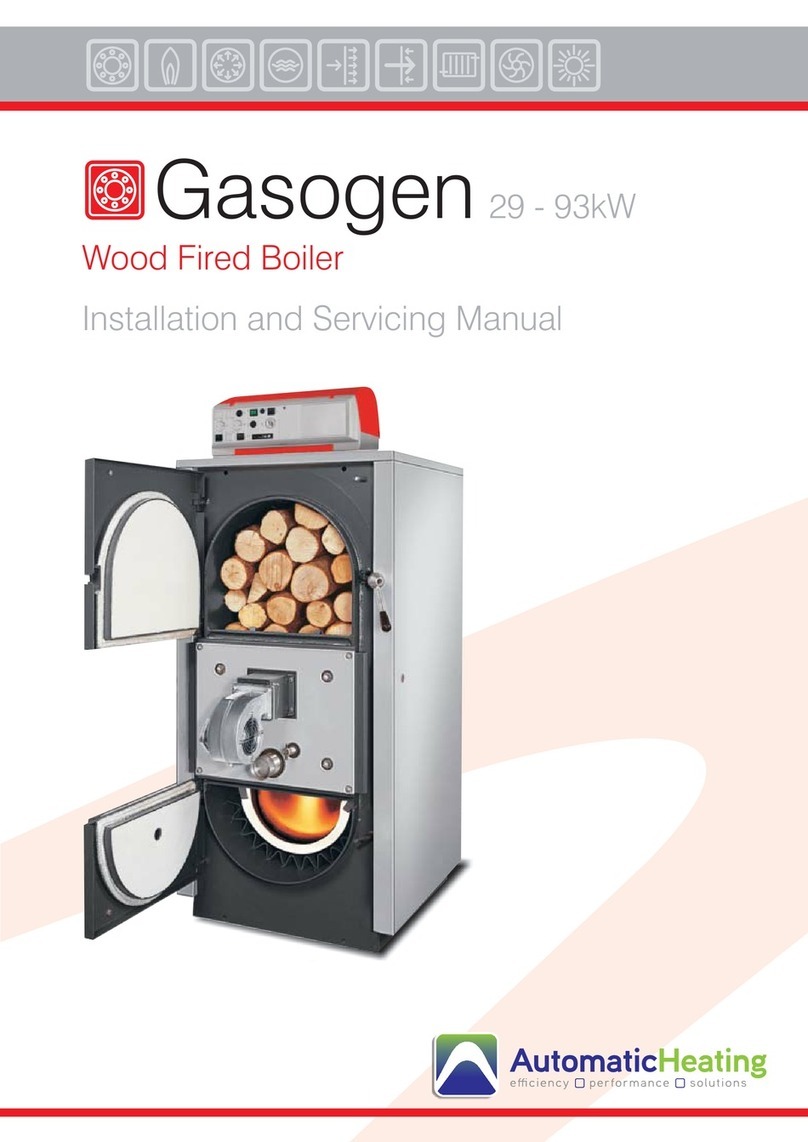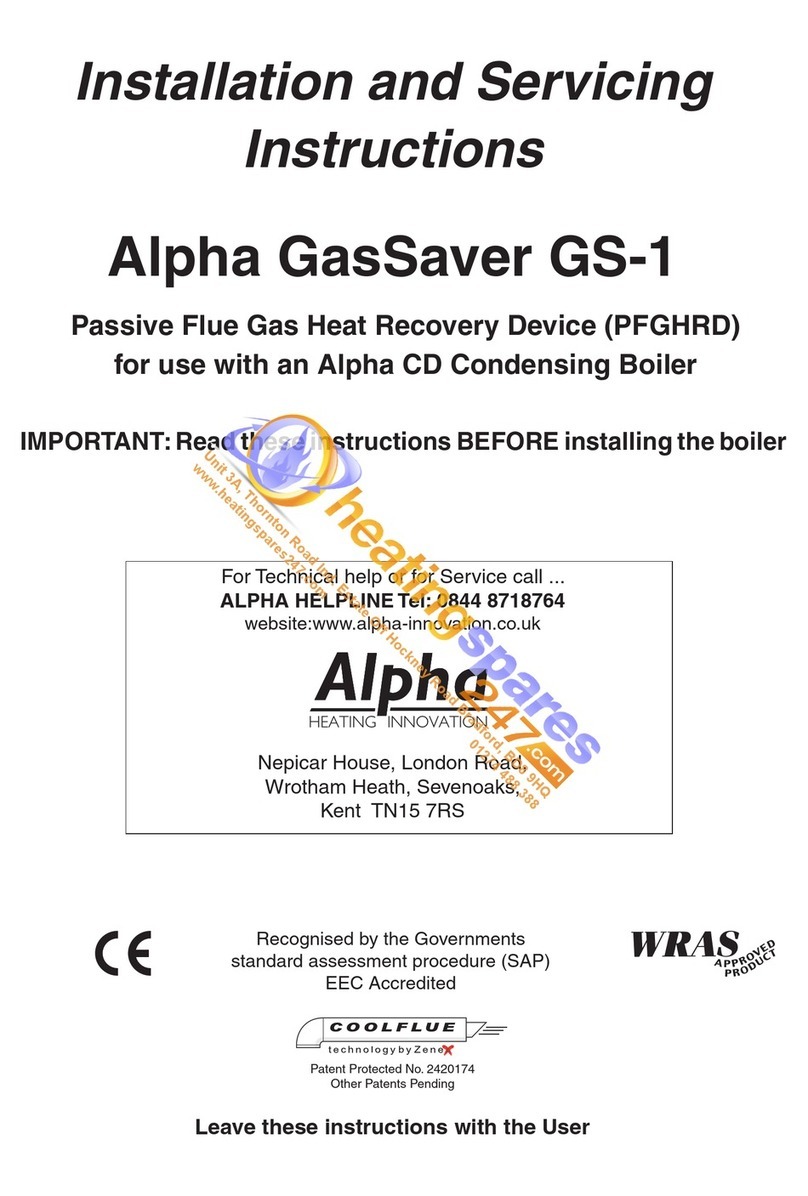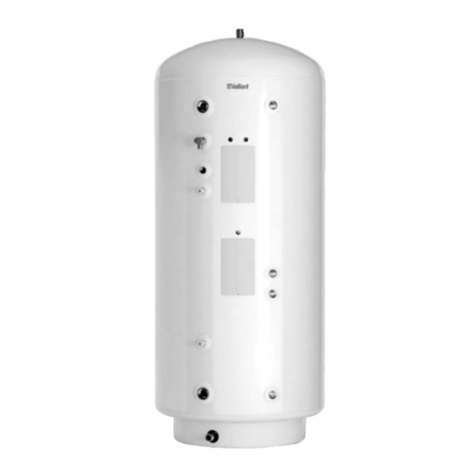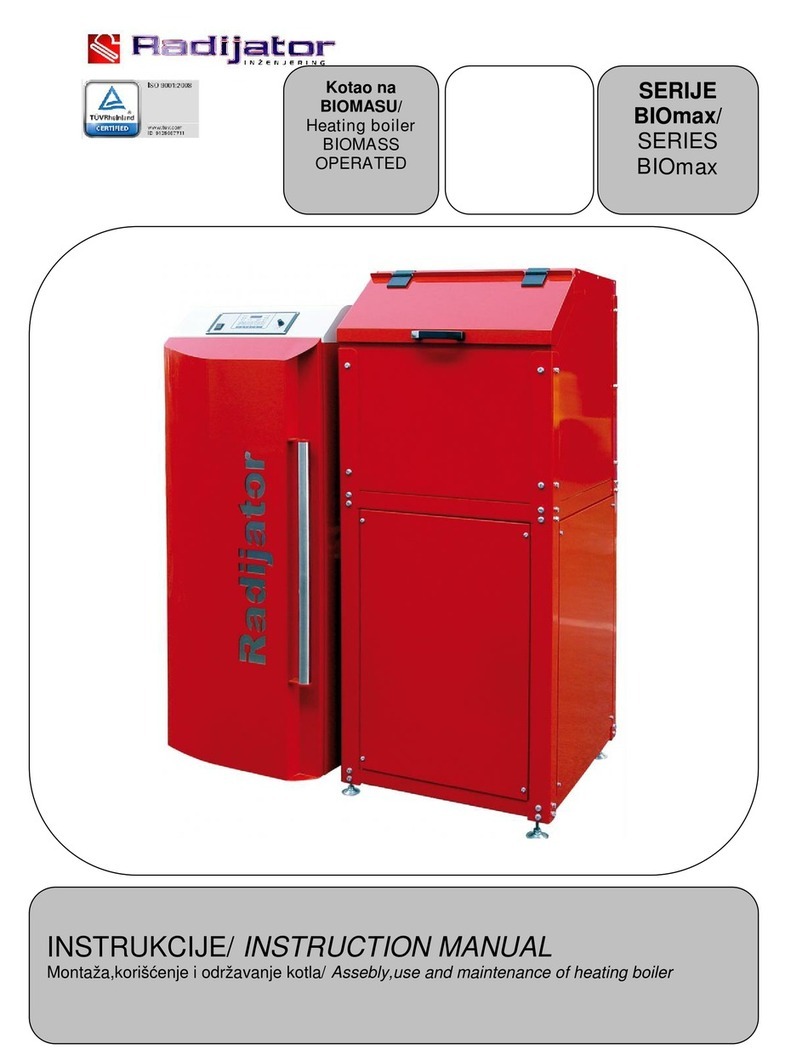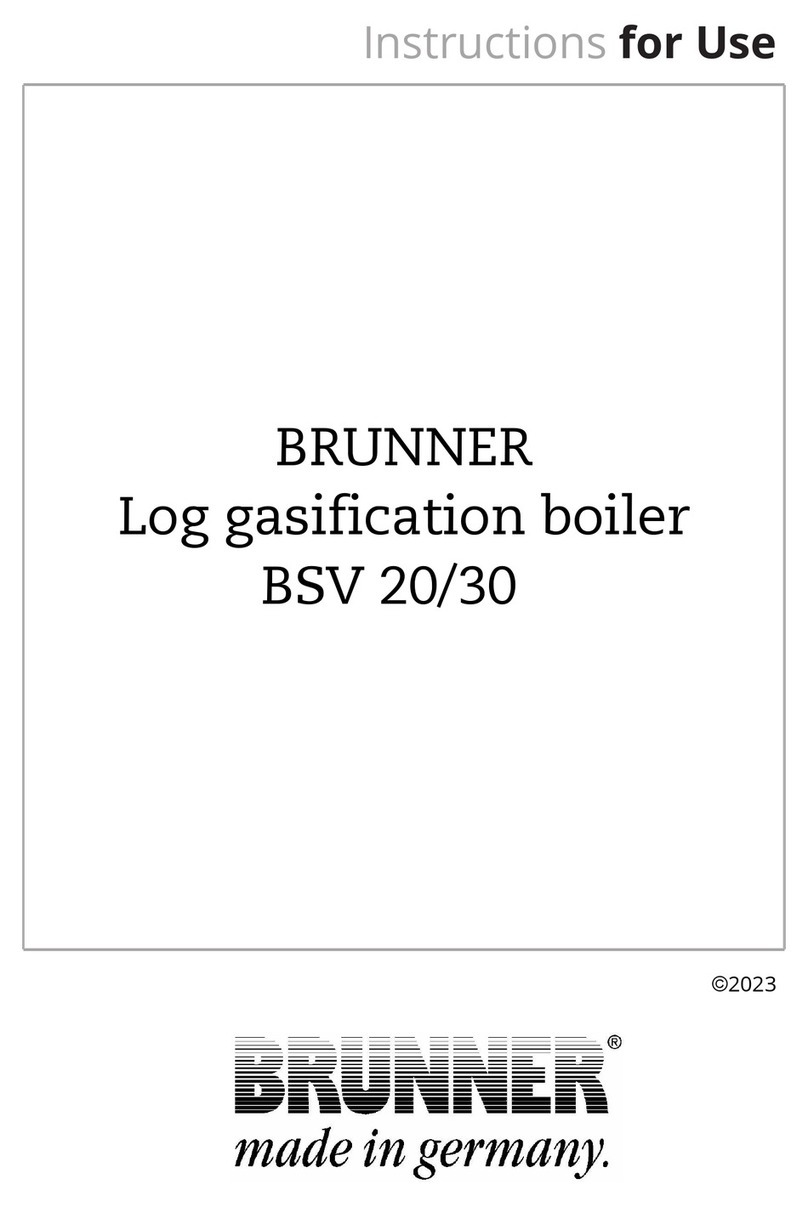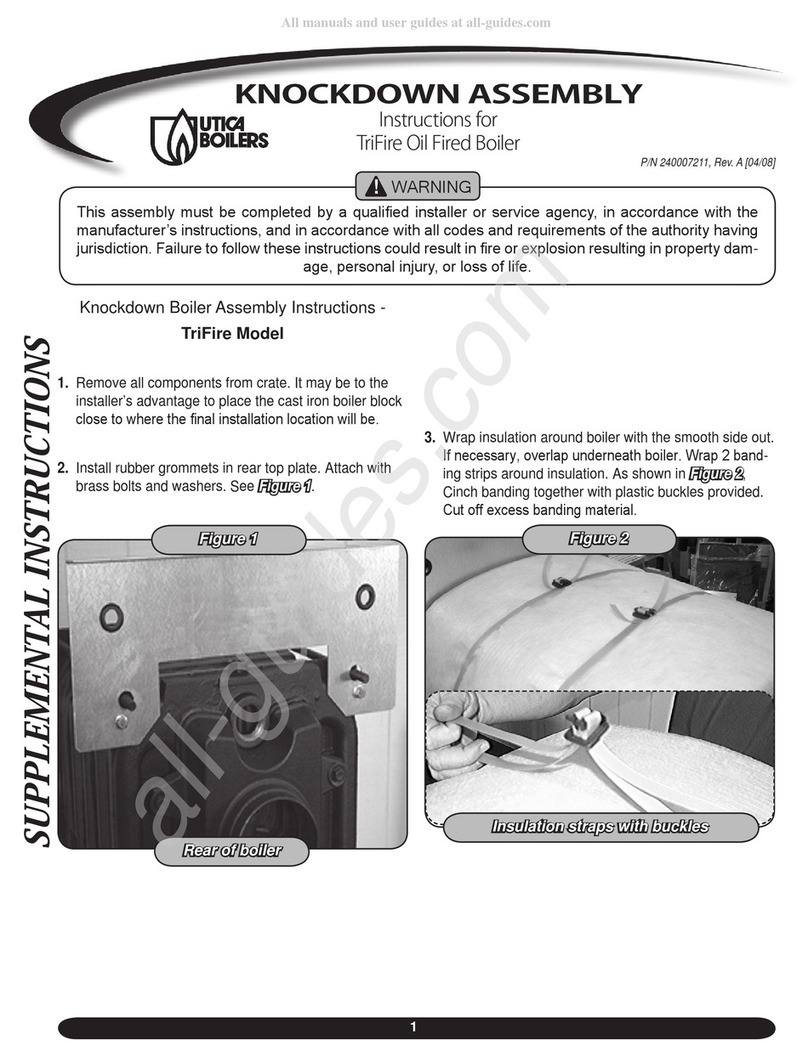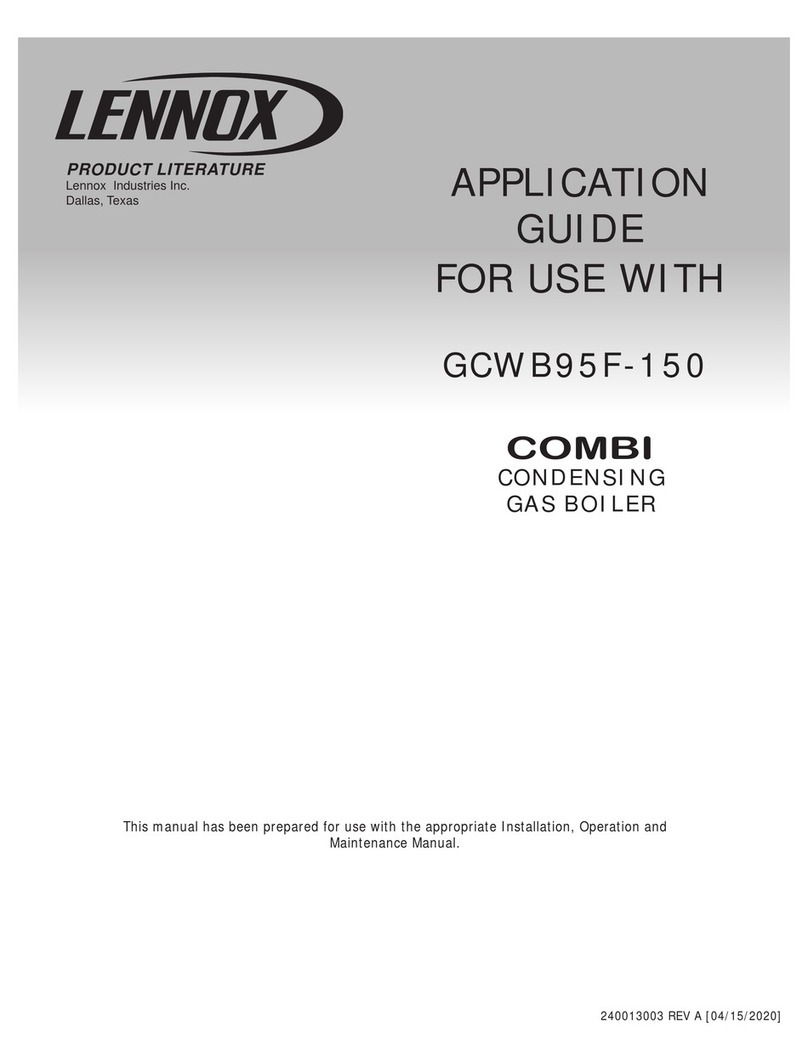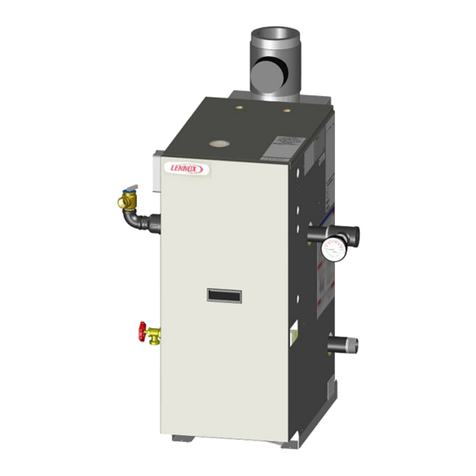
5PN 240013016, Rev. B [12/31/2020]
1.
Read the Owner’s Manual for Safe Operation. Failure
to follow rules for safe operation and instructions can
cause malfunction of boiler and result in death, serious
bodily injury, and/or property damage.
2.
Install boiler in accordance with requirements of
authority having jurisdiction, or in the absence of such
requirements : United States, NFPA 31: Standard
for the Installation of Oil Burning Equipment (latest
edition).
3.
Before servicing, allow boiler to cool. Always shut o
any electricity and oil to boiler when working on it.
4.
Inspect oil line and connections for leaks.
5.
Be certain oil burner nozzle is the size required. Over-
ring will result in early failure of the boiler sections.
This will cause dangerous operation.
6.
Never vent this boiler into enclosed space. Always vent
to outside. Never vent to another room or inside a
building.
7.
Be sure there is adequate air supply for complete
combustion.
8.
Follow regular service and maintenance schedule for
ecient and safe operation.
9.
Keep boiler area clean and free of combustible material,
gasoline and other ammable vapors and liquids.
10.
Oil burners are not do-it-yourself items. This boiler
must be installed and serviced by qualied professionals
using combustion test instruments.
WARNING
Burn and scald hazard. Safety relief valve could
discharge steam or hot water during operation.
Install discharge piping per these instructions.
!
11.
Be aware when piping the safety relief valve if system
pressure exceeds safe limit of 30 pounds per square
inch, the safety relief valve will automatically lift
open. Lifting of the safety relief valve can discharge
large quantities of steam and hot water, which may
damage the surroundings. Before installing the safety
relief valve read the manufacturer’s instructions and
maintenance section of the manual on safety relief
valves.
12.
Installation and sizing of the expansion tank must
consider heating systems total water volume,
temperature, boiler initial ll pressure, and system
arrangement. Improperly installed and sized expansion
tank may result in frequent lifting of the safety
relief valve or other heating system problems. For
proper installation, sizing, and maintenance of the
expansion tank follow guidelines established by tank
manufacturer.
13.
Expansion tank performance and life expectancy can
be hindered by overlling the boiler. Recommend initial
ll pressure of 10-12 psig. For higher ll pressures
expansion tank’s air charge will need to be increased to
match ll pressure. Consult manufacturer’s guidelines
for sizing and selection.
14.
Purging the heating system of air and gases when
rst putting boiler into service is critical for proper
circulation and quiet performance. Once air and gases
are purged, for boiler installations using oat type
vents, air vents should be closed for normal operation.
If air is heard or noticed by loss of heat, purge system
and open vents for short period of time.
SAFE INSTALLATION AND OPERATION
NOTICE
This boiler has been designed for residential
installations. If used for commercial applications,
all jurisdictional requirements shall be met. This
may require wiring and/or piping modications.
Manufacturer is not responsible for any changes to
the original design.
WARNING
Combustion chamber insulation in this product
contains ceramic ber material. Ceramic bers can
be converted to cristobalite in very high temperature
applications. The International Agency for Research
on Cancer (IARC) has concluded, Crystalline silica
inhaled in the form of quartz or cristobalite from
occupational sources is carcinogenic to humans
(Group1). Avoid breathing dust and contact
with skin and eyes. Use NIOSH certied dust
respirator (N95). This type of respirator is based
on the OSHA requirements for cristobalite at the
time this document was written. Other types of
respirators may be needed depending on the job
site conditions. Current NIOSH recommendations
can be found on the NIOSH website
https://
www.cdc.gov/niosh/topics/silica/.
approved
respirators, manufacturers, and phone numbers are
also listed on this website. Wear long-sleeved, loose
tting clothing, gloves, and eye protection. Apply
enough water to the combustion chamber lining to
prevent dust. Wash potentially contaminated clothes
separately from other clothing. Rinse clothes washer
thoroughly.
NIOSH stated First Aid. Eye: Irrigate immediately.
Breathing: Fresh air.
!
WARNING
Fire, Explosion, burn, scald hazard. Use only number
2 fuel oil. Do not use gasoline, kerosene, crankcase
oil or any oil containing gasoline. Failure to follow
these instructions could result in death or serious
injury.
!
